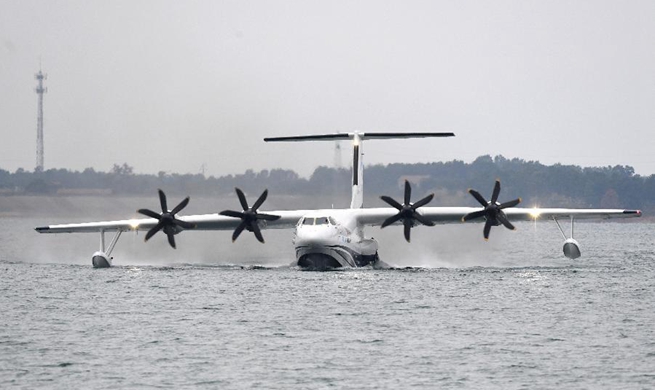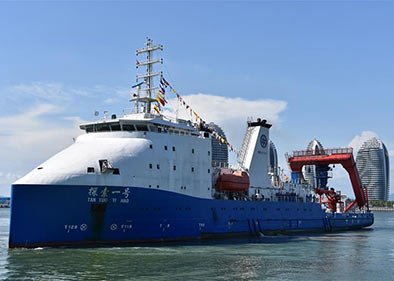PARIS, Oct. 20 (Xinhua) -- France-based European Space Agency (ESA) on Saturday announced that it had successfully launched BepiColombo, a joint European-Japanese spacecraft on a seven-year journey "to study the mysteries of the solar system's innermost planet."
Europe's first mission to Mercury, BepiColombo, in cooperation with the Japan Aerospace Exploration Agency (JAXA), blasted off on an Ariane 5 from Europe's spaceport in Kourou, in French Guiana, at 01:45:28 GMT on Oct. 20.
Signals from the spacecraft, received at ESA's control center in the German town of Darmstadt, via the New Norcia ground tracking station at 02:21 GMT, confirmed that the launch was successful, according to the ESA.
"Launching BepiColombo is a huge milestone for ESA and JAXA, and there will be many great successes to come," said Jan Worner, ESA Director General.
"Beyond completing the challenging journey, this mission will return a huge bounty of science," he added.
JAXA's head Hiroshi Yamakawa hailed "the excellent achievement of launch operations," while expressing the "high expectations that the ensuing detailed observations on the surface and interior of Mercury will help us better understand the environment of the planet, and ultimately, the origin of the Solar System including that of Earth."
BepiColombo comprises two orbiters. ESA's Mercury Planetary Orbiter (MPO) and JAXA's Mercury Magnetospheric Orbiter (MMO or 'Mio'). The two orbiters would be carried by ESA-built Mercury Transfer Module (MTM) to Mercury using a combination of solar electric propulsion and gravity assist flybys.
It is planned to fly past Venus twice and then fly by Mercury six times before entering its orbit in late 2025.
MPO will then study Mercury's surface and internal composition, to determine the planet's iron content and examine why its core is partially liquid. JAXA's orbiter will collect data on the planet's magnetosphere.
"A unique aspect of this mission is having two spacecrafts monitoring the planet from two different locations at the same time: this is really key to understanding processes linked to the impact of the solar wind on Mercury's surface and its magnetic environment," said ESA's BepiColombo project scientist Johannes Benkhoff.
"BepiColombo will build on the discoveries and questions raised by NASA's Messenger mission to provide the best understanding of Mercury and solar system evolution to date, which in turn will be essential for understanding how planets orbiting close to their stars in exoplanet systems form and evolve, too," he added.
Meanwhile, the planet's proximity to the sun with the extreme temperature between 180 degree Celsius to over 450 degree Celsius makes the spacecraft trip challenging, the ESA noted.
"BepiColombo is one of the most complex interplanetary missions we have ever flown. One of the biggest challenges is the Sun's enormous gravity, which makes it difficult to place a spacecraft into a stable orbit around Mercury," said Andrea Accomazzo, ESA flight director for BepiColombo.
"We have to constantly brake to ensure a controlled fall towards the Sun, with the ion thrusters providing the low thrust needed over long durations of the cruise phase," she added.













